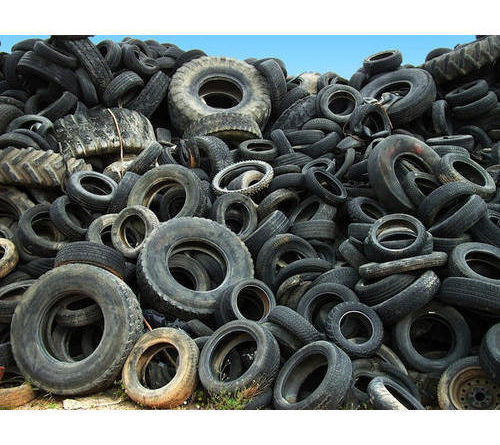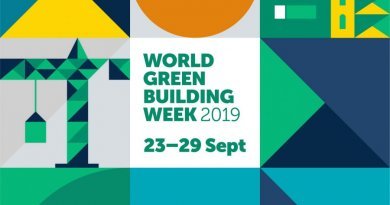Sustainable disposal solution for waste tyres in cement manufacturing a New Zealand first
Fletcher Building today announced the completion of its tyre project at Golden Bay Cement, which will avoid up to three million used tyres going to landfill each year to instead be used in cement manufacturing.
The significant upgrade to New Zealand’s only end-to-end cement plant, which is based in Portland, Whangarei, will be officially opened today by the Honourable David Parker, Minister for the Environment.
“This innovative project is a win-win-win for the environment. It reduces a significant waste problem, reuses a valuable resource, and reduces carbon emissions by about 13,000 tonnes a year,” Environment Minister David Parker said.
Fletcher Building CEO Ross Taylor says this is a landmark sustainability project for manufacturing in New Zealand.
“Using end-of-life tyres in cement manufacturing helps to solve a significant waste problem in New Zealand as well as improve the sustainability of a key building material. Up to 50 percent of the 6.3 million waste tyres created in New Zealand each year will now be used in cement manufacturing at the Golden Bay Cement plant instead of going into landfill.
“Waste tyres have been used successfully in many cement plants throughout the world. We are proud to bring this world-leading technology to New Zealand as well as our investment in local manufacturing jobs and capability.
“The project was a significant investment over several years that involved upgrades to the plant, with specialist equipment from Denmark installed to feed the tyres into the cement manufacturing process. With the upgrades now completed, we have been successfully using tyres since 22 February. The tyres are combusted at around 1,400°C and the rubber, metal and any ash are combined into the cement.
“Golden Bay Cement supplies more than half the New Zealand market as the only local cement manufacturer.
“Our cement already has around 20 percent lower emissions than imported cement and using tyres is part of the decarbonization plan to reduce its footprint even further. It will also reduce our need for natural raw materials like iron sand.
“Local manufacturing must compete fiercely with imports, and this investment allows us to continue doing just that. At the same time, we’re providing local jobs as well as supply chain security for the domestic building, infrastructure, and construction industries,” said Ross Taylor.
Fletcher Building has a verified science-based target to reduce its emissions by 30 percent by 2030.
Ross Taylor said, “Climate change is an urgent, global priority. The building and materials sector has an important role to play by changing the way that it designs, builds, sources, and manufactures the building materials used in the construction process. We are serious about transforming our business around sustainability to do our part in creating a sustainable future and reducing our carbon emissions.”
The Ministry for the Environment part funded the $25 million project with a grant of $16 million awarded through its Waste Minimisation Fund.
Golden Bay Cement’s (GBC) use of waste tyres will:
- Use up to 3.1 million shredded waste tyres
- Reduce coal use by 15%
- Reduce iron sand use by 5,000 tonnes
- Reduce carbon emissions by around 13,000 tonnes
What’s the difference between cement and concrete?
Cement is a fine grey powder largely made from limestone and typically used to bind or harden materials together. Concrete is made from cement, aggregates (crushed stone/gravel) and water.
What is Portland Cement?
Portland Cement is the most common type of cement used around the world. It was given the name Portland Cement in the 18th century as the finished product had a similarity to Portland Stone from the Isle of Portland in Dorset, England.
How is cement made?
Portland Cement is made by heating finely ground raw materials, typically clays and limestone, to extremely high temperatures in a cement kiln. After being heated to extremely high temperatures, these materials form small balls called “clinker”, which are very finely ground with Gypsum and Limestone to produce Portland Cement. How cement is made video: https://www.youtube.com/watch?v=GIEWj8hRWt8
Where does GBC get the raw ingredients from?
The two main raw materials used to make Portland Cement are sourced from quarries owned by GBC in the Whangarei area. Crystalline Limestone is sourced from the Wilsonville Quarry in Hikurangi and Argillaceous Marlstone is sourced from the Portland Quarry. Other minor raw materials include iron-sand from Taharoa and Gypsum imported from Australia.
Why is cement high in carbon emissions?
Approximately two thirds of the carbon emissions are released by the raw materials as they are converted into Calcium Oxide, the active ingredient of Portland Cement. Thirty percent of carbon emissions come from the fuels (coal, biomass and tyres) used to heat the cement kiln to the very high temperatures needed for this process. The remaining carbon emissions come from electricity generation.
Will combusting tyres this way create smoke, air pollution or waste?
The products of tyre combustion are highly dependent on the combustion conditions. Because the tyres at GBC are combusted at very high temperatures (over 1,000°C), they are completely consumed; the rubber, metal and any ash are combined into the cement. There will be no black smoke or physical waste. The gases released are essentially the same as for coal: carbon dioxide and water with minor amounts of carbon monoxide and other gases and very trace quantities of heavy metals. A benefit of using tyres is it will displace some coal use and therefore reduce carbon emissions by around 13,000 tonnes.
We have stringent emissions control and gas dust filtration technology in place which ensure there are no harmful effects from air discharges, as outlined in our resource consent from the Northland Regional Council.
About Golden Bay Cement
Golden Bay Cement, a Fletcher Building Company, is a world-class production plant based at Portland, Whangarei that’s been operating for more than 100 years. It is New Zealand’s sole remaining fully integrated cement manufacturer and largest supplier and employs around 200 people. https://www.goldenbay.co.nz/



